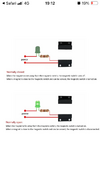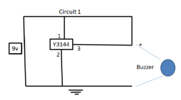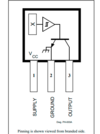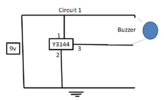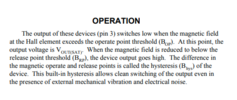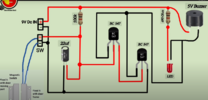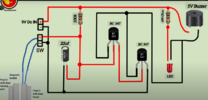Alistair Ballantyne
- Nov 16, 2020
- 33
- Joined
- Nov 16, 2020
- Messages
- 33
Hi, I want to make a circuit to attach to a door.
Though it couldn't be easier with a Hall sensor and magnet - but I'm struggling and don't know why!
I'm using a Y3144 sensor.
I made the most basic circuit - see circuit 1 and the magnet does nothing.
Tries a more complex circuit from an online source - Door Open Alarm Circuit. the buzzer sounds but the magnet does not control the on/off function.
Can I have damaged the sensor playing around with different circuits, is there a different sensor I should be using - or are the circuits not fit for purpose?
Would appreciate someone sanity checking this please.
Many thanks,
Alistair
Though it couldn't be easier with a Hall sensor and magnet - but I'm struggling and don't know why!
I'm using a Y3144 sensor.
I made the most basic circuit - see circuit 1 and the magnet does nothing.
Tries a more complex circuit from an online source - Door Open Alarm Circuit. the buzzer sounds but the magnet does not control the on/off function.
Can I have damaged the sensor playing around with different circuits, is there a different sensor I should be using - or are the circuits not fit for purpose?
Would appreciate someone sanity checking this please.
Many thanks,
Alistair
